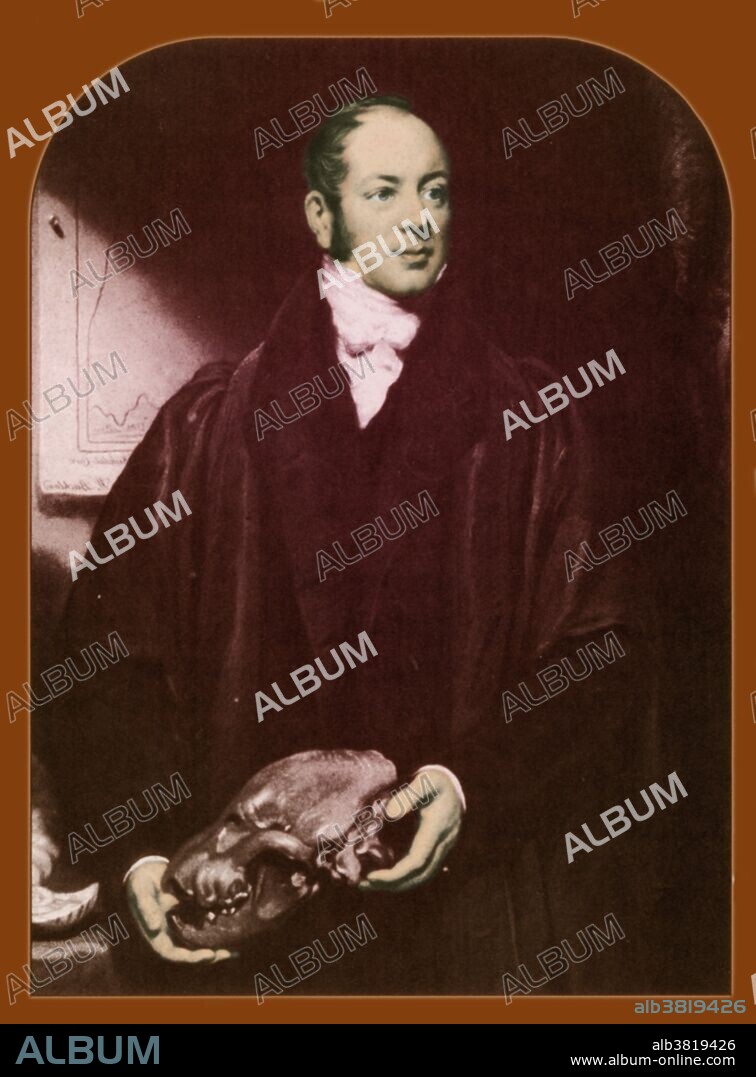alb3819426
William Buckland, English Paleontologist

|
Zu einem anderen Lightbox hinzufügen |
|
Zu einem anderen Lightbox hinzufügen |



Haben Sie bereits ein Konto? Anmelden
Sie haben kein Konto? Registrieren
Dieses Bild kaufen.
Nutzung auswählen:

Titel:
William Buckland, English Paleontologist
Untertitel:
Siehe automatische Übersetzung
William Buckland (March 12, 1784 - August, 14 1856) the English geologist and paleontologist who wrote the first full account of a fossil dinosaur, which he called "megalosaurus," or "great lizard." He was a pioneer in the use of fossilized feces, for which he coined the term coprolites, to reconstruct ancient ecosystems. Buckland was a proponent of the Gap Theory that interpreted the biblical account of Genesis as referring to two separate episodes of creation separated by a lengthy period, Early in his career he believed that he had found geologic evidence of the biblical flood, but later became convinced that the glaciation theory of Louis Agassiz provided a better explanation.Around the end of 1849, he contracted a disease which increasingly disabled him until his death in 1856 at the age of 72. Post-mortem examination identified a tubercular infection of the upper cervical vertebrae which had spread to the brain.
Bildnachweis:
Album / Science Source / New York Public Library
Freigaben (Releases):
Model: Nein - Eigentum: Nein
Rechtefragen?
Rechtefragen?
Bildgröße:
2810 x 3805 px | 30.6 MB
Druckgröße:
23.8 x 32.2 cm | 9.4 x 12.7 in (300 dpi)
Schlüsselwörter:
18. JAHRHUNDERT • 18. JH. • BERÜHMT • BERÜHMTE PERSÖNLICHKEIT • ILLUSTRATION • ILLUSTRATIONS • MANN • MEGALOSAURUS • NATURWISSENSCHAFTLER • NOTABEL • PALAEONTOLOGE • PALAEONTOLOGIE • PALÄONTOLOGE • PALÄONTOLOGIE • PERSON • PERSöNLICHKEITEN • PERSÖNLICHKEITEN • PORTRAIT • PROMINENZ • WISSENSCHAFTLER • WISSENSCHAFTLICH
 Pinterest
Pinterest Twitter
Twitter Facebook
Facebook Link kopieren
Link kopieren Email
Email
